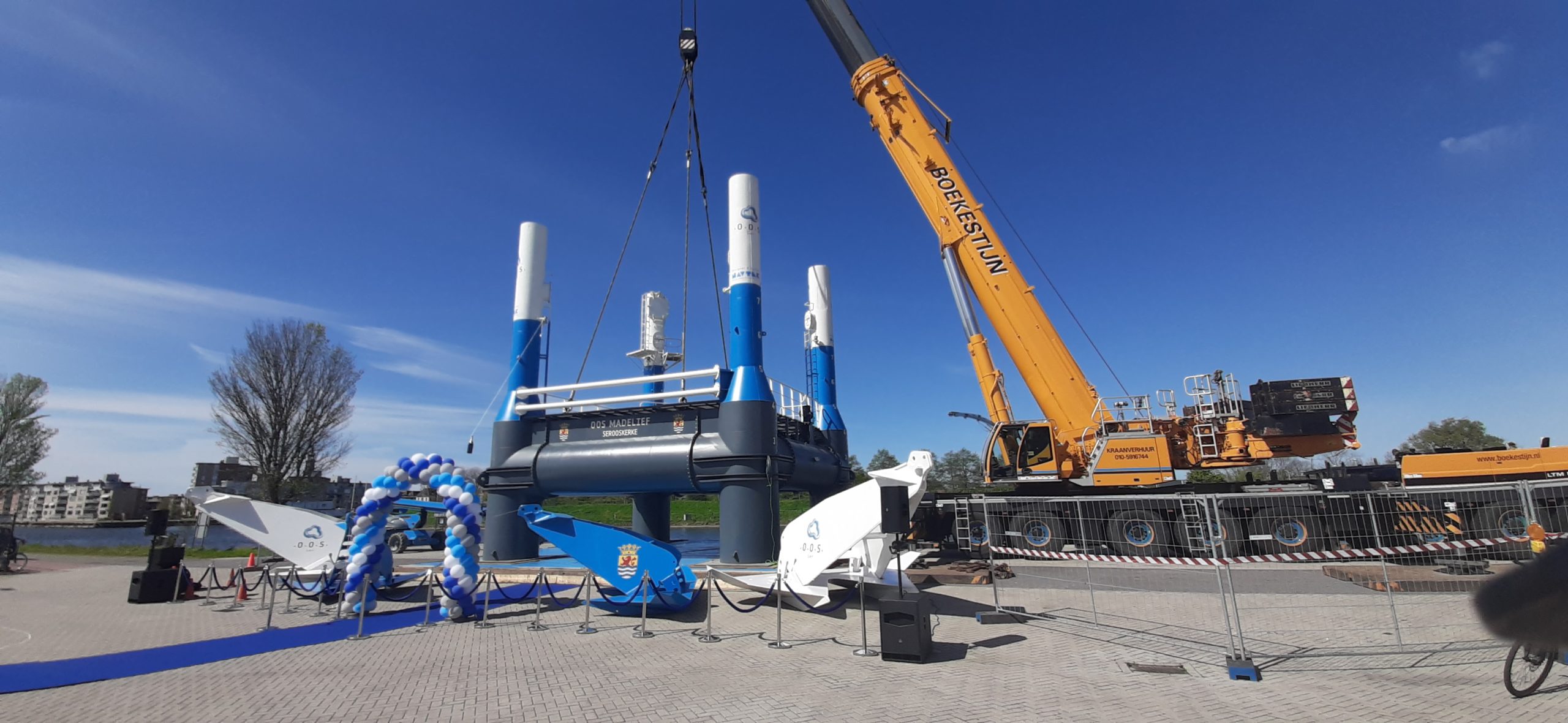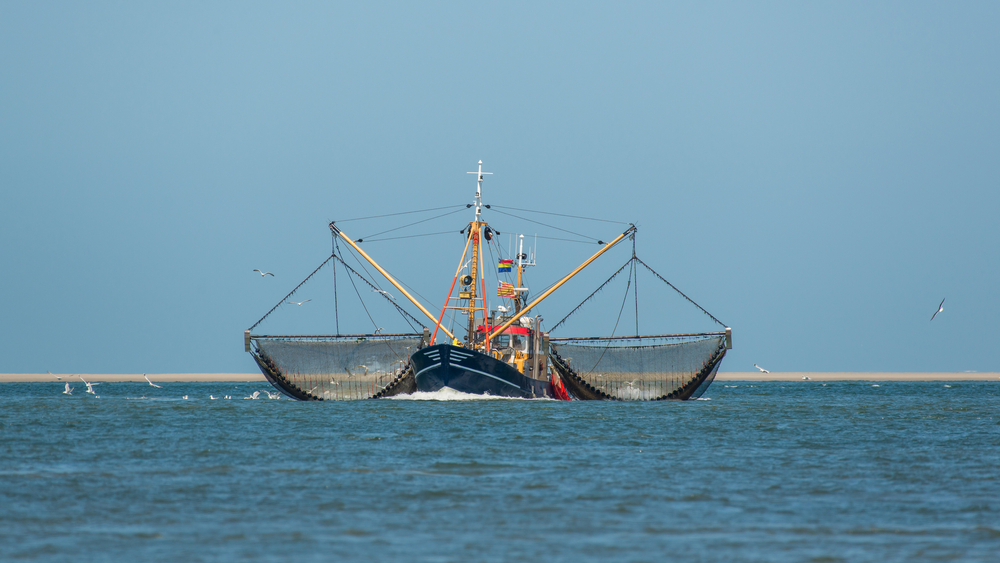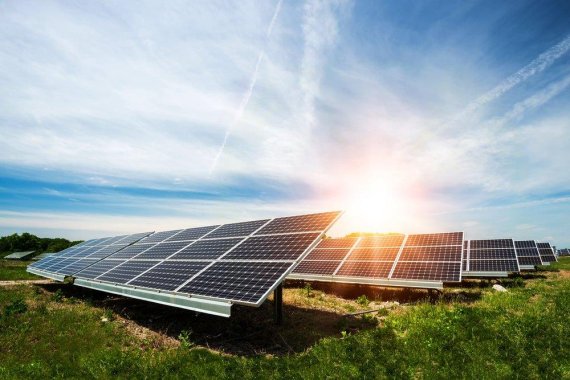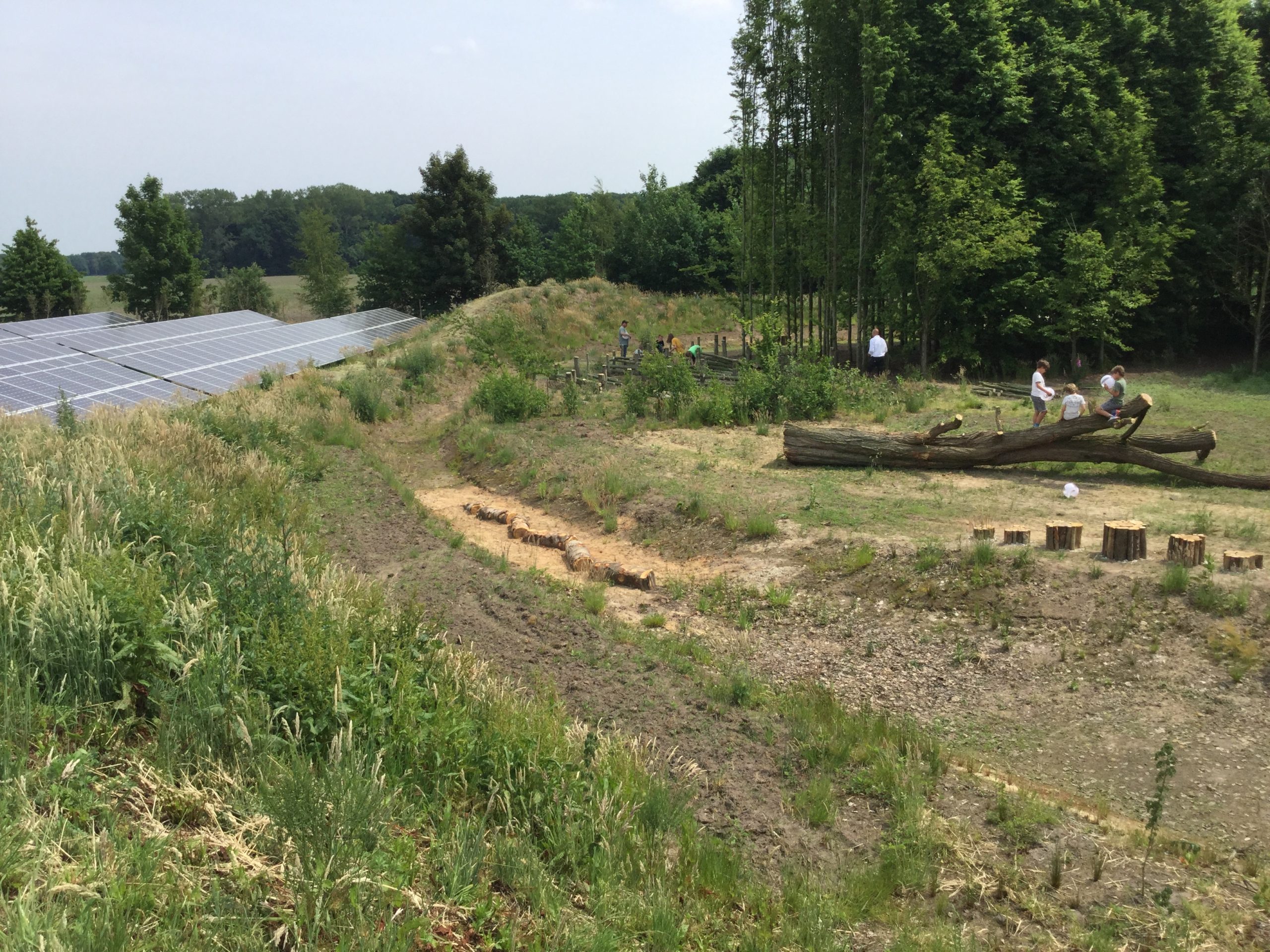Growing mussels using rafts is not new. But doing so in open seas, in a wind park, using a steel structure with an adjustable depth, is. Researchers of Wageningen Marine Research and Wageningen Economic Research are investigating whether the new concept for offshore mussel farms is viable.
A miniature version of the farm was launched on Wednesday. ‘There are many mussel larvae in the sea at the end of April and beginning of May. Having the test version in the water at that time allows the larvae to latch on to the contraption’, says crustacean researcher Pauline Kamermans. The final testing location is Borssele Wind Park, some 55 kilometres from Vlissingen Port.
A producer of steel offshore constructions, OOS, came up with the concept. The company designed a raft-like construction specifically for wind parks. The construction consists of four large legs that are connected through girders. From there, a web-like structure made up of dozens of horizontal wires with droppers to which the mussel larvae can attach fans out. Once the larvae latch onto the vertical droppers, they can grow and mature.
Adjustable depth
A unique feature of this farm is its adjustable depth (see video), which may vary from just above the water’s surface, for example, when the raft requires maintenance or the mussels are harvested, to several meters below the surface, which keeps the mussels clear of the waves in open seas. ‘ Hanging culture is normally applied in more tranquil waters’, says Kamermans.
In addition to monitoring the mussels’ suitability for consumption – certain toxic algae may not be present in the shellfish- the research team also monitors the survival, development and yield of mussels that are grown this way. Kamermans expects the first results this fall. ‘ Because the wires are quite close together, separated by just a few metres near the raft, we are interested in the mussels’ growth and whether their proximity to each other will affect their development. Perhaps it will make no difference as long as there are sufficient nutrients in the water.’
Shellfish bank
The research team also investigates what happens beneath the platform, on the sea bed. ‘Some mussels will fall from the droppers onto the sea bed and may well form ecologically valuable shellfish banks’, Kammermans clarifies. ‘An artificial reef would likely increase the survival rate of these fallen mussels, but it is impossible to obtain a permit for this location. Hence, we will investigate what happens naturally. It is worth comparing that data to a research location in the Voordelta, where an artificial reef will be constructed.’
Economic viability
In addition to Wageningen Marine Research, Wageningen Economic Research is also involved in the pilot. These scientists will perform tasting tests and study the pricing options for these mussels and, thus, the concept’s economic viability. The pilot is part of a multi-year EU project, ULTFarms, which includes pilots at Belgian, German, and Danish wind parks.
Borssele Wind Park
The testing location for the mussel farm (semi-submersible mussel farm, SMF for short) is in the Borssele Wind Park, where a testing plot has been assigned for mariculture (shellfish, seaweed). The idea behind this initiative is that wind parks are suited for these forms of passive fisheries, in part because regular fishing activities and navigation are forbidden. However, the location does not necessarily make the researchers’ lives easier, as diving is not permitted. The scientists depend on underwater cameras and sensor technology.

 The mussel farm test version was launched on 10 April. Photo Pauline Kamermans
The mussel farm test version was launched on 10 April. Photo Pauline Kamermans 

